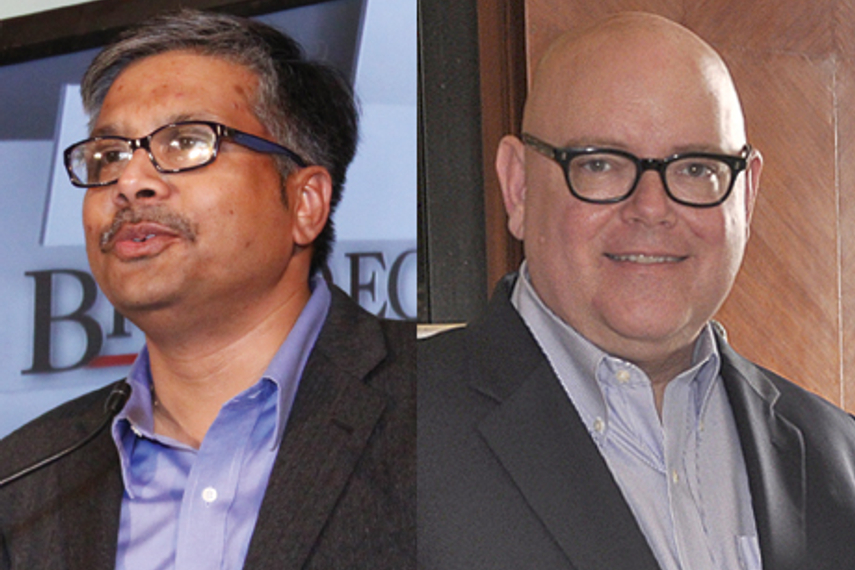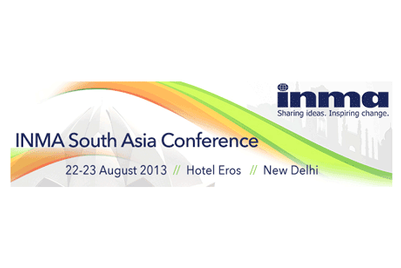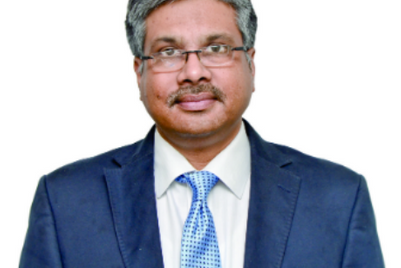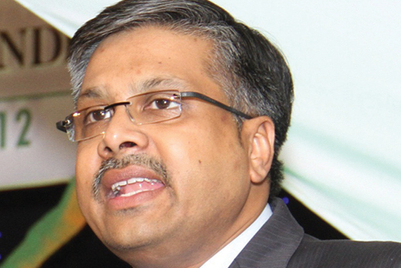
Arunabh Das Sharma (ADS), president, BCCL (left) and Earl Wilkinson (EW), CEO and executive director, INMA
Are advertisers migrating from print to digital?
ADS: I do not think advertisers are moving from print to digital. The overall ad pie is growing at, let’s say, 6 to 8 per cent every year. A portion of it is going to digital. Digital is currently 3 to 3.5 per cent of the total advertising pie. Even if it grows at 50 per cent over the next 10 years, it will still be 10 to 12 per cent or may be 15 per cent. Even if it grows brilliantly, it will get to 20 per cent. Print and TV are still 40 per cent each. I do not have a doubt in my mind that digital will become a significant play but the time horizon for that is where the question lies. So it is a question of when, not if.
EW: I guess the answer is yes. But I have a difficulty comparing and contrasting an article that gets 35 seconds of viewing time and they bounce off and go on to the next thing versus embracing a print newspaper and spending 20 to 25 minutes of a deep dive. I am not sure how you compare those two. So in the aggregate, yes, but they are different experiences. Print is different than digital interaction. I got o my favourite websites four or five times in a day, but I am there only for a minute.
But print advertising is under pressure currently...
ADS: It is not only print but the entire industry is under pressure. You saw what happened to one of the companies last week, and they are not heavily into print. But they came into such a tremendous pressure that they had to cut a huge part of their workforce. The industry slowdown is affecting everyone. As far as companies are concerned, we are a bigger ship. A bigger ship is likely to take bigger shocks than smaller outfits. But until the economy improves, there will be some challenges here.
EW: Yes. The question is what is cyclical and what is structural? Companies more likely to conserve cash in a downturn - that is what history shows. But market-leading companies, in recession and downturns, act like market leaders to grow their market share.
It is more of the structural things that I am more concerned with, in India or elsewhere. The big trend in the advertising community is to make more marketing decisions based on data. And there is some threat to that if we do not get smarter about our own research and know our audiences better than they do.
Do media companies need deep pockets to get onto the digital wagon?
ADS: I do not think they need deep pockets. Most media companies are fairly well off. For me, it is more a question of cracking the right business model. It is the balance between making and sustaining the current business - it is not as if the current business is not profitable, but we need to add on specific business models. And there is no ‘one’ standard business model. It has to be linked to your company’s DNA. Therefore, it is much harder than it sounds. The complexity is really around the business model, around how company’s DNA supports its business model, whether you have the right kind of people to support that business model, whether you are able to re-train some of your own people. The challenges are not financial, I think; it is in some of the other areas.
EW: Yes. The lesson from The Washington Post sale reverberates even in India. Not from a digital perspective but why did the Graham family sell it? They said, ‘There is no doubt that we would survive, the question is whether we would succeed’. And their issue was, even as a big media company, they were not big enough and could not scale enough to experiment with new products, new innovations, new business models. They could not move fast enough. They could not give innovations long enough landing fields. They believed that they needed to find someone with deep pockets in a rich capital base to constantly innovate, constantly experiment for the future. I think, we as an industry need to look at various models for that. May be one model is you need bigger media companies. The other is probably you need competitors to form coalitions of the willing.
ADS: At an overall level, circulations are not dropping. We have to look at fair pricing, look at industries where we are more effective. We have to look at how we can innovate and get advertisers to see the value that print brings. Every medium, and every kind of media, brings its own values. Role of print right now is to see at what point our costs and value intersect. Unlike electronic media, print media has a cost - a physical cost of paper. It is not a question of rationalising cost; it is a question of rationalising value.
EW: There is going to be upward pressure, first of all on circulation pricing. It is virtually non-existent right now. And, a bit of warning to my friends in South Asia: in terms of advertising pricing, Western countries wrecked themselves by dramatically increasing ad rates. It is not going to happen here because it is too competitive an environment and there is macro-pressure coming with technology. I think it’s going to be a combination of innovation and circulation price increase and efficiencies. Because of inflation, falling rupee, costs are going to come under intense scrutiny.
What should be the revenue model in the digitally converged age for print?
ADS: The revenue model, in the short run, would continue to be advertising. It will not be content monetisation in this country. I do not see firewalls or paywalls coming in the short run. Print is a reach medium and digital is a more action-focussed medium. The question is how I combine reach with action focus to be able to drive up my value. And how do I charge for that and combine my two offerings to deliver the value to my consumer (my advertiser) is looking for.
EW: The bigger emphasis would be on filling the revenue hole left by print ad migration. The revenue opportunity to fill print ad hole includes ad revenues, content marketing, equity plays, portfolio extensions, search advertising, second-wave mobile, sponsored content, subscription bundles, transactional e-commerce, video.







.jpg&h=268&w=401&q=100&v=20250320&c=1)
.jpg&h=268&w=401&q=100&v=20250320&c=1)
